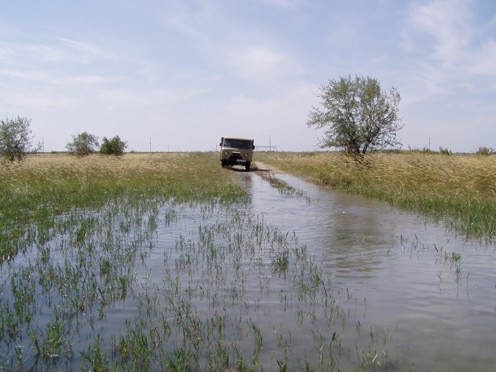

Such undesirable phenomena as over wetting, swamping and secondary salination of soils are taking place during irrigation, especially in arid zone, which lowers considerably the productivity of irrigated soils. Swamping and secondary salination of soils are taking place in the result of raising of ground waters. The raising of ground waters depends from many factors, first of all, from regime, irrigation method and drainage.
Considerable volumes of drainage-discharge waters, containing compounds of natural and anthropogenic origin are forming in the result of irrigation on areas of agricultural lands. For river waters accepting discharge from rice lands, potential danger have salts, containing in discharge water which are washing out from soil grounds, and also containing residual quantities of mineral fertilizers and poisonous chemicals. The most negative influence onto live organisms has excess content of movable forms of heavy metals.

|
|

|
Nitrous compounds and first of all nitrates are the basic components polluting ground waters. Mineral and organic fertilizers, poisonous chemical, industrial-household wastes are the basic sources of soil pollution at irrigating agriculture. Excess utilization of mineral fertilizers leads not only to pollution of soils, but also to agricultural production quality deterioration.
 |
|
 |
|||||||||
Previous |
Next |